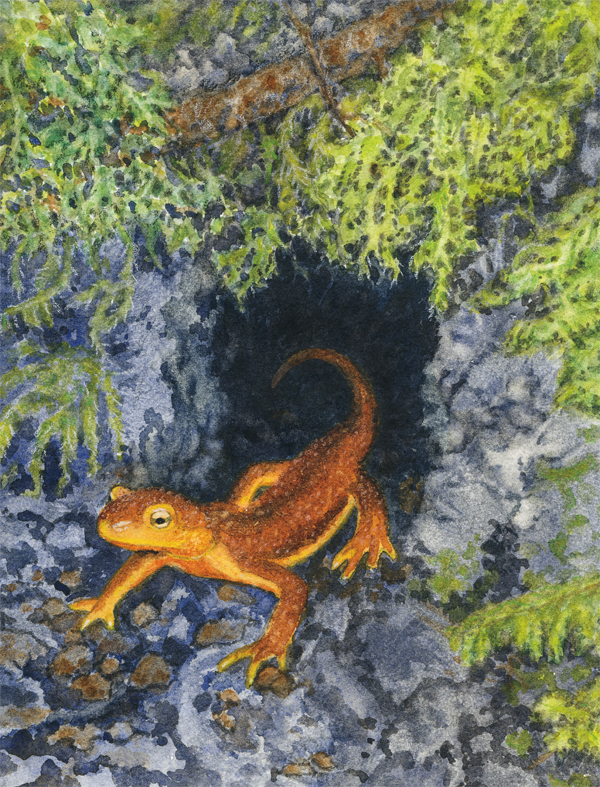
Excerpts from the California newt chapter
Three dead hunters “In the predawn coolness of a fall day around 1950, a hunter in a campsite somewhere in Oregon’s Coast Range walked to a stream with an empty coffeepot. After scooping up water in the darkness and walking back to camp, he set the pot on the grill, added coffee grounds, and boiled the coffee. As the sky slowly lightened, he poured three cups, handed one to each of his two companions, and saved the third for himself. While sipping their coffee, the men began to notice tingling in their lips and hands. Soon they were vomiting, and within thirty minutes all three hunters were dead. When hikers found them two days later, there was no sign of foul play. The only unusual thing in the campsite was a dead rough-skinned newt in the coffeepot…
Curious about whether the newt in the coffeepot could have caused the deaths, a young biologist named Edmund Brodie Jr. began observing rough-skinned newts in the early 1960s. When he saw frightened newts raising their heads and tails to show off their bright undersides, he got serious. In the animal world, eye-catching, or “aposematic,” coloration often means “I’m toxic––eat me at your
own risk!” (p. 48-49)
“Shaped roughly like lizards, but no more closely related to them than to mammals, California’s newts appear magically after fall, winter, and spring rains, plodding purposefully across roads, trails, meadows, and leaf-littered slopes. Their painfully slow progress suggests suicidal tendencies, but they have little to fear from most predators as they are protected by whopping amounts of a potent poison. They make epic journeys with an unerring sense of direction and, like most amphibians, have the ability to “breathe” in water as well as air. But their most amazing talent may be the ability to regrow perfect organs and limbs.” (p. 4)
